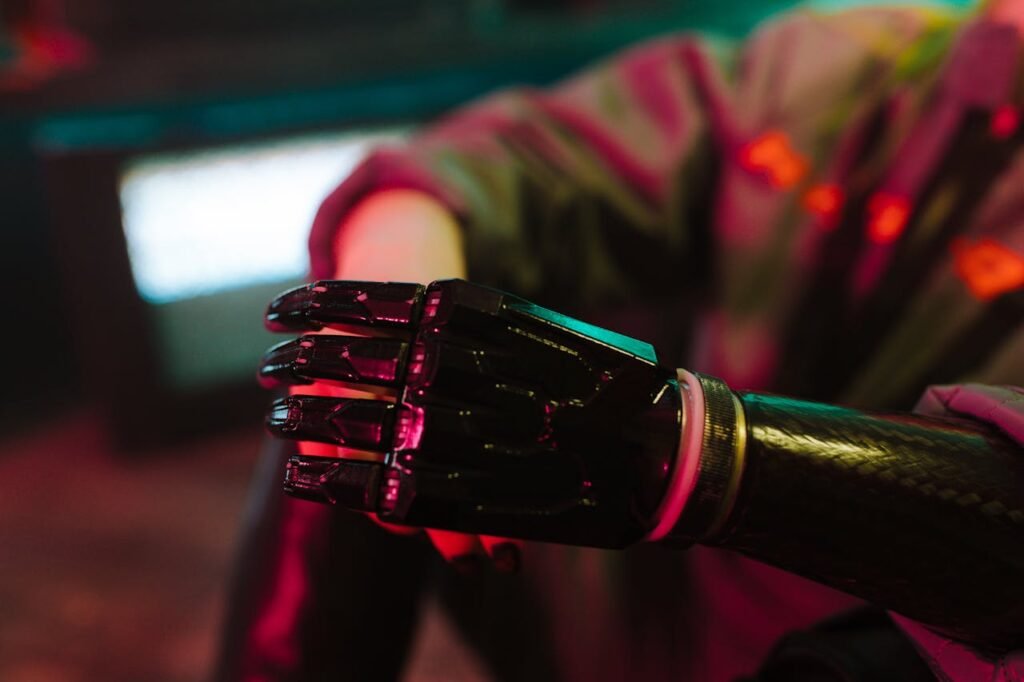Losing part of your hand or one or more fingers changes life in ways most people can’t imagine. Simple things—holding a pen, picking up a cup, typing on a keyboard—suddenly require new ways of thinking and moving. But there is hope, and that hope often comes in the form of a partial hand or finger prosthesis.
If you’ve been wondering whether you might be a good candidate for one, this guide is for you. We’ll walk you through what makes someone eligible, what to expect, and how to decide if this step is right for you. The goal isn’t just to give you information—it’s to give you clarity and confidence about the road ahead.
Understanding Partial Hand and Finger Prostheses
What They Are and Why They Matter
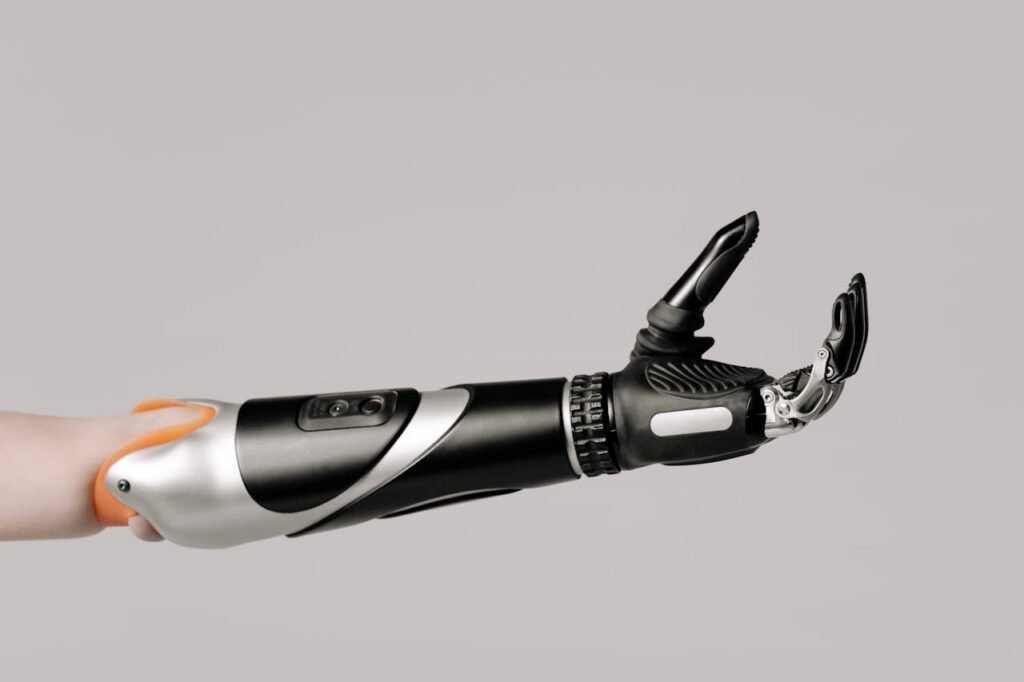
A partial hand or finger prosthesis is a custom-made device designed to replace the missing part of your hand. It can be purely cosmetic, restoring a natural look, or functional, restoring grip, movement, and dexterity.
These devices are different from full-hand prostheses because they work with the part of your hand you still have. They’re designed to complement your remaining strength, range of motion, and sensation, making them a very personal and tailored solution.
The Role They Play in Daily Life
Partial hand and finger prostheses do more than fill a gap. They help balance your hands so tasks feel more natural. They protect sensitive areas from bumps or injuries. And they can give you back the ability to perform tasks you may have stopped trying—like chopping vegetables, carrying a bag, or using tools.
For many people, they also restore something less visible but just as important: confidence. Whether at work, in social situations, or just looking in the mirror, a well-fitted prosthesis can make you feel like yourself again.
Who Might Be a Candidate for a Partial Hand or Finger Prosthesis
People With Traumatic Injuries
One of the most common reasons for partial hand or finger loss is an accident. This could be a workplace injury, a road accident, or even a mishap at home. If you have enough remaining hand structure to support a prosthetic device, you may be an excellent candidate.
Prosthetic technology has advanced to the point where even complex injuries can often be accommodated. Devices can be shaped to match the missing part, blend with your skin tone, and, if desired, provide functional movement.
People With Amputations Due to Medical Conditions
Conditions like diabetes, severe infections, or certain cancers can lead to the loss of fingers or parts of the hand. If the remaining tissue is healthy and stable, a prosthesis can be fitted to protect the area and restore function.
In these cases, timing matters. Fitting a prosthesis too soon after surgery can cause discomfort or slow healing. A specialist will evaluate when your hand is ready, often after swelling has reduced and the skin has fully healed.
People With Congenital Differences
Some people are born without fully developed fingers or parts of their hand. In these cases, a prosthesis can offer both cosmetic and functional benefits. Children, in particular, can benefit from early use, as it helps them develop skills that involve two hands from a young age.
Pediatric fittings require special consideration, as the device must be comfortable, lightweight, and adjustable for growth. Robobionics has experience working with young users to create prostheses that are both practical and kid-friendly.
People With Specific Functional Goals
Sometimes, the decision to get a prosthesis isn’t about replacing what’s missing—it’s about achieving a specific task more easily. For example, a musician who lost part of a finger might want a device to help them hold a bow or press guitar strings.
In these cases, the prosthesis can be custom-designed for the activity. This could mean adding grip surfaces, optimizing weight, or shaping it for a particular tool or instrument.
Factors That Influence Candidacy
Level of Amputation
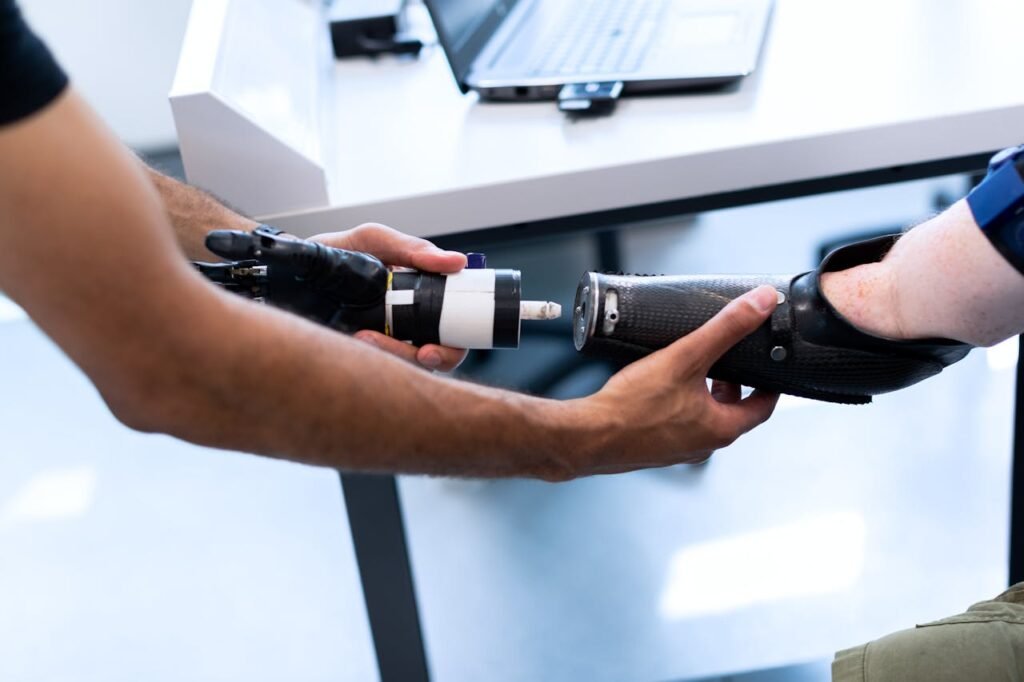
The amount of hand you have left will strongly influence whether a prosthesis will work for you—and which type will be best. If you still have functional joints and muscle activity, you may be eligible for a mechanical or myoelectric prosthetic that moves.
If your remaining hand structure is minimal, a passive device may be better suited. These are designed mainly for appearance and light support, but they can still improve balance and protection.
Health of the Residual Limb
Your residual limb needs to be healthy and stable to support a prosthesis. That means no open wounds, active infections, or severe skin sensitivity. Good skin condition is essential for comfort, as the prosthesis will be in contact with your skin for many hours each day.
For some people, preparing for a prosthesis means going through a short rehabilitation period first—strengthening muscles, improving flexibility, and ensuring skin health.
Your Lifestyle and Daily Demands
The best prosthesis for you will depend heavily on how you use your hands every day. If you work in an office, you’ll have different needs from someone who works in construction or farming. Similarly, if you play sports, cook frequently, or work with tools, these activities will shape the design and function of your device.
A thorough lifestyle assessment by your prosthetist will help match your daily activities with the right type of prosthesis.
Willingness to Train and Adapt
Getting a prosthesis is not the same as getting your original hand back. Even the most advanced device requires training and practice. You’ll need to learn new ways of doing things, and sometimes, you’ll need to be patient as your brain and body adapt.
The best candidates are those who are open to learning and willing to put in the time to master their new device. Those who approach it as a long-term investment in their independence often see the best results.
Types of Partial Hand and Finger Prostheses
Passive Prostheses

Passive prostheses are designed mainly for appearance and light functional support. They don’t actively move, but they restore the natural look of the hand and can help with basic stabilization.
A passive prosthesis can make a big difference in social confidence. It covers sensitive areas, protects the residual limb from bumps, and can help with balance when holding objects. For example, if you’re carrying a book or holding a bowl, the passive device can steady it while your natural hand does the heavier work.
These devices are usually made of silicone or other skin-like materials, and they can be matched to your skin tone and texture. Some are so realistic that others may not notice you’re wearing one.
While they won’t replace the gripping function of a real hand, passive prostheses work well for people who want comfort, low maintenance, and a natural appearance.
Mechanical Prostheses
Mechanical prostheses use simple moving parts to provide functional grip without the need for electronics. They are often body-powered, meaning you move another part of your hand or wrist to control them.
For example, if you bend your wrist or press down with your palm, the mechanical fingers may close to hold an object. This makes them great for activities that require steady, repetitive grip, such as holding tools, carrying bags, or using kitchen utensils.
Mechanical prostheses are rugged, reliable, and require little upkeep. They’re especially popular among people who work outdoors or in environments where electronics might be hard to maintain.
Myoelectric Prostheses
Myoelectric prostheses are the most advanced option. They use sensors placed against your skin to detect muscle signals from your remaining hand or forearm. When you think about moving your missing fingers, the sensors pick up the signal and move the prosthetic accordingly.
This technology allows for very precise and natural movements. You can grip delicate objects like a glass without crushing it, or hold something heavy with a firm, steady grasp.
Myoelectric devices often have multiple grip modes, allowing you to switch between holding a pen, turning a key, or carrying a shopping bag. At Robobionics, our Grippy Bionic Hand is one example of this technology, complete with our Sense of Touch™ feedback system to help you control grip pressure.
While myoelectric prostheses require more training and regular charging, they can restore a remarkable amount of independence.
Matching the Right Prosthesis to Your Needs
Start With a Functional Assessment
Before you choose a prosthesis, it’s important to undergo a functional assessment. This involves looking at what parts of your hand remain, how much movement you have, and how strong your grip is.
If you have good muscle activity and joint movement, you might be a candidate for a mechanical or myoelectric prosthesis. If not, a passive prosthesis may be the better starting point, with the option to upgrade later.
Consider Your Daily Tasks
Think about what you do most often in a typical day. Do you cook, write, or type? Do you handle tools, carry heavy objects, or play a musical instrument? Your answers will point toward the features you need.
For example, a farmer might prioritize durability and weather resistance, making a mechanical device a better fit. An office worker might benefit from the precision of a myoelectric prosthesis.
Think About Comfort and Wear Time
A prosthesis that isn’t comfortable won’t get used. This is why fit, weight, and materials are critical. Passive devices are often lighter and can be worn for long periods without fatigue. Active devices can be heavier but offer greater function.
The goal is to balance comfort with capability. Sometimes, people choose to have more than one device—one for everyday wear and one for specific tasks.
Plan for Training and Support
Whichever device you choose, training is essential. Even a passive prosthesis requires some adjustment in how you position and use your hand.
For active prostheses, especially myoelectric ones, you’ll need structured practice to build skill and control. This can be done with an occupational therapist or using guided programs like our Gamified Rehabilitation App, which turns training into interactive challenges.
The Candidacy Evaluation Process
Medical and Physical Assessment
The first step in deciding if you’re a candidate for a partial hand or finger prosthesis is a thorough medical evaluation. Your doctor or prosthetist will check the health of your residual limb—looking for skin sensitivity, scar tissue, circulation quality, and any remaining movement in your fingers, hand, or wrist.
If there are open wounds, infections, or extreme tenderness, you may need to wait until the area heals before being fitted. For some people, this healing stage includes physiotherapy to strengthen muscles and improve range of motion.
Functional Testing
Functional testing helps determine what kind of prosthesis will give you the most benefit. This can include grip strength measurement, wrist mobility checks, and assessments of how you handle objects of different shapes and weights.
If you have muscle activity in your residual limb, a myoelectric device might be an option. If not, a mechanical or passive device may be better. This step ensures you don’t end up with a prosthesis that’s too advanced to control or too limited for your needs.
Lifestyle and Occupational Review
Your prosthetist will ask about your job, hobbies, and daily activities. Someone who works in an office will have different requirements from a person who does heavy construction or agricultural work.
This isn’t just about matching the prosthesis to your tasks—it’s also about making sure it fits into your lifestyle comfortably. For example, if you work outdoors for long hours, a device with simple mechanics and high durability may be better than a high-tech one that needs regular charging.
Personal Goals and Expectations
Your goals matter as much as your physical condition. Do you want a prosthesis mainly for appearance, or do you want it to perform specific tasks? Are you looking for a permanent, all-day device, or something you can use for certain activities?
Clear goals help guide the design and selection process. They also help you and your prosthetist track progress after you start using the device.
Common Challenges New Users Face
The Adaptation Period
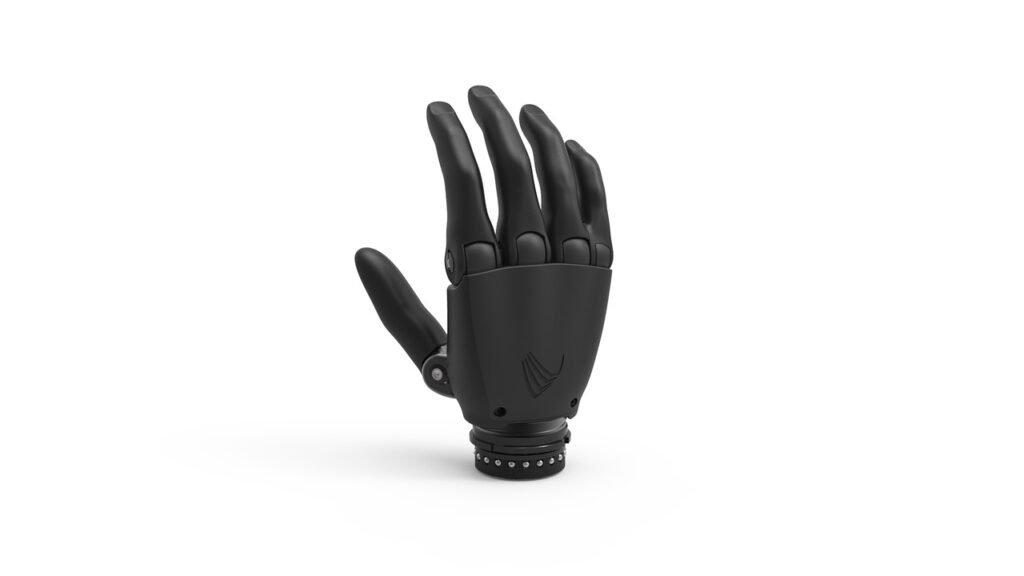
Wearing a prosthesis is different from using your natural hand. Even with the best fit, there’s an adjustment phase. Passive devices require you to rethink how you hold and stabilize objects. Active devices require training to master movement and grip.
At first, tasks may feel slower or awkward. With practice, your speed and accuracy will improve. The key is to be patient with yourself.
Comfort and Skin Issues
Skin irritation can happen, especially in the early weeks. Sweating, pressure points, and friction are common causes. Using breathable liners, taking breaks during long wear periods, and keeping your skin clean can help.
If irritation persists, your prosthetist can adjust the fit or recommend a different liner material.
Weight and Fatigue
Active prosthetics—especially myoelectric ones—can be heavier than passive devices. If you experience fatigue, you can build endurance by gradually increasing wear time and doing light hand exercises to strengthen supporting muscles.
Some users also rotate between a lighter passive prosthesis for everyday activities and a heavier active one for tasks that require more function.
Maintenance and Downtime
Mechanical parts need occasional servicing. Myoelectric devices require battery charging and, sometimes, software updates. Planning for regular maintenance will help you avoid downtime.
Many users keep a backup device for situations when their main prosthesis is being repaired or serviced.
Preparing for Your First Fitting
Step 1: Heal and Strengthen
If you’ve recently had surgery or injury, focus on healing and maintaining mobility in the rest of your hand and arm. Physiotherapy exercises can help keep your muscles active and prevent stiffness.
Step 2: Gather Your Activity List
Write down the tasks you most want to perform with your prosthesis—at work, at home, and during leisure activities. This list will guide your prosthetist in recommending features that matter most to you.
Step 3: Discuss Style and Appearance
If appearance is important to you, consider whether you want a skin-tone match, a cosmetic finish, or even a custom color or design. Many users choose natural-looking devices for social and work settings, and functional designs for specific tasks.
Step 4: Try Demo Devices
Whenever possible, try out different prostheses during your evaluation. Feeling the weight, movement, and fit of various devices will help you make a confident choice. At Robobionics, we always arrange a hands-on demo before finalizing a device.
Step 5: Plan for Training
Ask about training programs, either with a therapist or through guided exercises. The more structured your training plan, the faster you’ll adapt to your prosthesis and the more independent you’ll feel.
Real-Life Case Studies That Show What’s Possible
Ravi – Returning to Work After an Accident
Ravi, a 32-year-old assembly line supervisor, lost two fingers on his right hand in an industrial accident. His main concern wasn’t just doing his job—it was how his team would see him. He worried about appearing less capable.
After evaluation, he was fitted with a myoelectric partial hand prosthesis that gave him enough grip to handle tools, operate machines, and perform quality checks. Within weeks, he was back on the job. The boost in function helped him regain his confidence, and his team quickly adapted to the change.
His story shows how the right device can address both functional and emotional needs, allowing someone to return to their career without losing momentum.
Anita – Balancing Work and Motherhood
Anita, a 28-year-old mother and graphic designer, lost part of her left hand in a kitchen accident. She needed to juggle two roles: caring for her young child and working at a computer.
She chose a lightweight mechanical prosthesis for home use, where she needed durability for cooking, cleaning, and childcare. For work, she used a myoelectric device that allowed her to design comfortably on a computer.
Her dual-device approach shows how different prostheses can meet different needs, making life more flexible and manageable.
Dev – Sports Enthusiast Turned Advocate
Dev, a 24-year-old student, lost three fingers in a motorcycle accident. He was passionate about badminton and initially feared he would have to give it up. After being fitted with a custom mechanical device designed to hold a racket, he returned to the court.
Today, he plays competitively again and volunteers at community events to raise awareness about prosthetic technology. His journey proves that sports and hobbies don’t have to end after hand loss—they just need a creative approach.
The Emotional Journey of Using a Prosthesis
Acceptance Takes Time
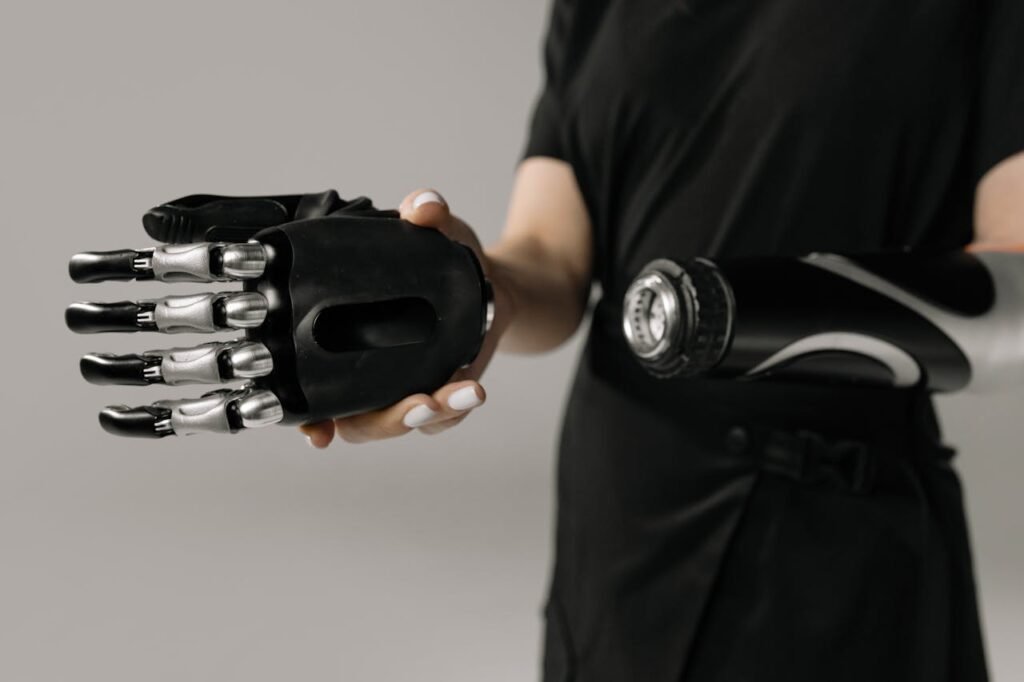
Losing part of your hand isn’t just physical—it’s emotional. People often go through stages similar to grief: shock, frustration, adaptation, and finally acceptance.
It’s common to feel impatient when you first get your prosthesis. You might expect it to feel like your natural hand right away. In reality, it takes weeks or even months to make it feel natural. Knowing this from the start can help you approach the journey with patience.
Self-Image and Social Confidence
For some, a prosthesis is a confidence booster simply because it restores the look of the hand. For others, it’s the ability to perform tasks independently that makes them feel whole again.
Either way, small victories matter—shaking someone’s hand confidently, holding a cup without spilling, or typing without hesitating. Over time, these moments build a stronger sense of self-assurance.
Dealing With Public Curiosity
People may look or ask questions. Some users enjoy explaining their prosthesis, while others prefer a quick, simple answer. Preparing a few responses in advance can make these interactions less awkward.
As you grow more comfortable, these moments often become opportunities to educate others and show what’s possible with modern prosthetics.
Strategies for Long-Term Success
Keep Practicing Beyond the First Month
Once the novelty wears off, some users reduce their practice time. But regular use—especially for active devices—is essential for maintaining skill. Challenge yourself to try new tasks, even if they feel small, like opening jars or handling coins.
Review Your Device Fit Regularly
Your body can change over time, and so can your needs. A prosthesis that fit perfectly a year ago might need adjustments today. Scheduling annual or semi-annual checkups helps keep it comfortable and effective.
Have a Backup Plan
If you rely on your prosthesis for daily activities, it’s wise to have a secondary device. This could be a simpler passive prosthesis that keeps you functional if your main one is in for repairs.
Stay Informed About New Technology
Prosthetic technology is evolving quickly. Staying connected with your provider means you’ll know when upgrades or new features could benefit you. Sometimes, a small change in design can make a big difference in comfort and function.
How Workplaces Can Support Prosthetic Users
Employer Awareness and Inclusion
Employers play a huge role in helping people with partial hand or finger loss return to work. Many workers are capable of resuming their roles if given the right tools and a supportive environment. This means understanding that a prosthesis is not a limitation but an adaptation—one that can restore productivity and confidence.
Workplaces can benefit from awareness programs that teach managers and colleagues about the functional capabilities of modern prosthetics. This removes misconceptions and builds trust between team members.
Providing Workplace Adaptations
A prosthetic user’s return to work may be smoother with minor adjustments to their workspace. This could include repositioning tools, installing adjustable desks, using lightweight equipment, or even adding grip aids. For example, a mechanical prosthesis might work better with modified handles on tools, while a myoelectric device might require a workstation with good charging access.
Making these changes early can prevent frustration and help employees adapt faster.
Integrating Prosthetic Support Into Benefits
Forward-thinking companies are including prosthetic care in employee health plans. This could mean covering a portion of the cost, arranging partnerships with prosthetic providers, or offering paid time off for training and adjustment.
The return on investment is clear—keeping skilled workers in their jobs, reducing turnover, and boosting employee morale.
Community-Level Support for Prosthetic Access
Role of NGOs and Local Groups
Non-governmental organizations can bridge the gap between those who need prosthetics and the resources to obtain them. By organizing screening camps, fundraising drives, or partnerships with manufacturers, NGOs can help deliver devices to people who otherwise couldn’t afford them.
They can also provide rehabilitation programs, especially in rural areas where formal therapy services may be scarce.
Awareness Campaigns
In many communities, people living with partial hand loss don’t know that affordable, functional prosthetics are available. Awareness campaigns—through schools, local events, or healthcare outreach—can make a huge difference. Once people know their options, they’re more likely to seek help and start the process of getting fitted.
How Robobionics Is Driving This Change
Designing for Indian Realities
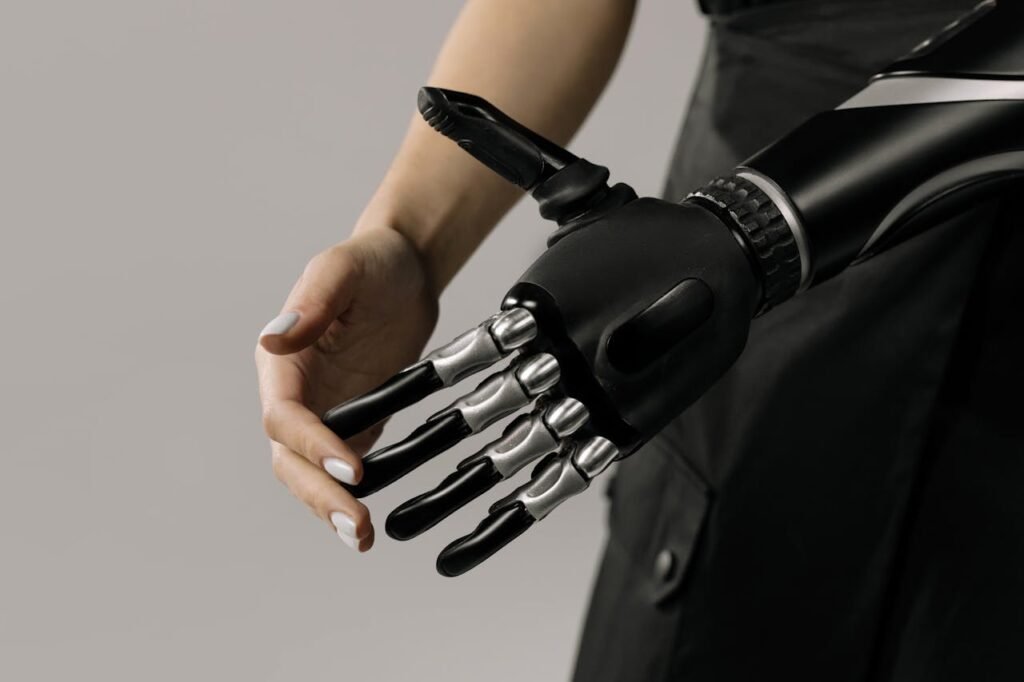
Most imported prosthetics are built for conditions that don’t match life in India—whether it’s climate, work styles, or economic realities. At Robobionics, we design for real Indian needs, from the farmer working under the sun to the office worker navigating crowded public transport.
Our devices are durable, comfortable, and tailored to withstand daily life here. And because we make 60 of our 64 components locally, we can keep costs low and service quick.
Offering Options for Every Need
Not everyone needs the same type of prosthesis. That’s why we offer passive, mechanical, and myoelectric solutions—each with specific strengths. Whether someone needs a natural look, rugged durability, or advanced grip control, we match them with a device that fits their life.
Our Grippy Bionic Hand, Grippy Mech Hand, and Grippy Mech Finger are all designed to give users the right balance of comfort, function, and affordability.
Building a Strong Support System
We don’t just fit a device and say goodbye. We offer ongoing training, follow-up checks, and access to our Gamified Rehabilitation App so users can keep improving their skills. We also create peer connections between new and experienced users, making the journey less intimidating.
Partnering to Reach More People
Through partnerships with hospitals, rehab centers, CSR programs, and NGOs, we’re ensuring prosthetic access reaches smaller towns and rural areas. Our goal is simple—no one should go without a prosthesis because of where they live or what they earn.
Final Thoughts: You Might Be Ready Sooner Than You Think
If you’ve lost part of your hand or one or more fingers, you might already be a candidate for a partial hand or finger prosthesis. It’s not just about replacing what’s gone—it’s about reclaiming your independence, your confidence, and your ability to do the things you love.
The right prosthesis is more than a tool. It’s a partner in your daily life, one that helps you work, play, and connect with the world on your own terms. Whether it’s a passive device for comfort and appearance, a rugged mechanical solution for heavy work, or a myoelectric prosthesis that brings back natural movement, there is an option designed for you.
And you don’t have to navigate this journey alone. At Robobionics, we walk with you from the very first conversation to years after you start using your device. We’ll guide you through the evaluation, help you choose a prosthesis that truly works for your lifestyle, and make sure you have the support and training to succeed.
If you’ve been wondering whether you’re ready, the best way to find out is simple—come and see for yourself. Book a free, no-obligation demo at www.robobionics.in/bookdemo and experience firsthand what’s possible. You may find that your next chapter begins sooner than you imagined.



